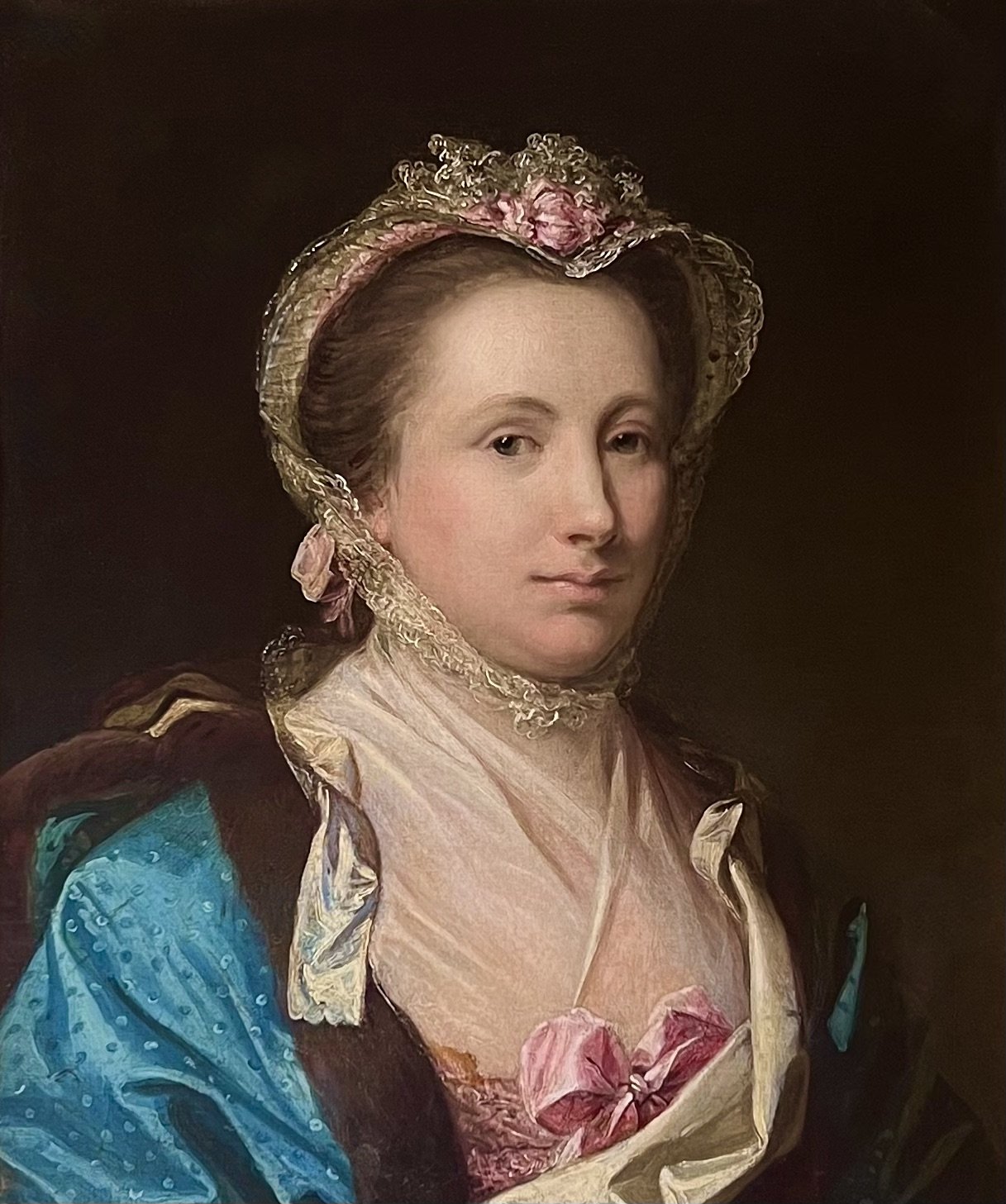
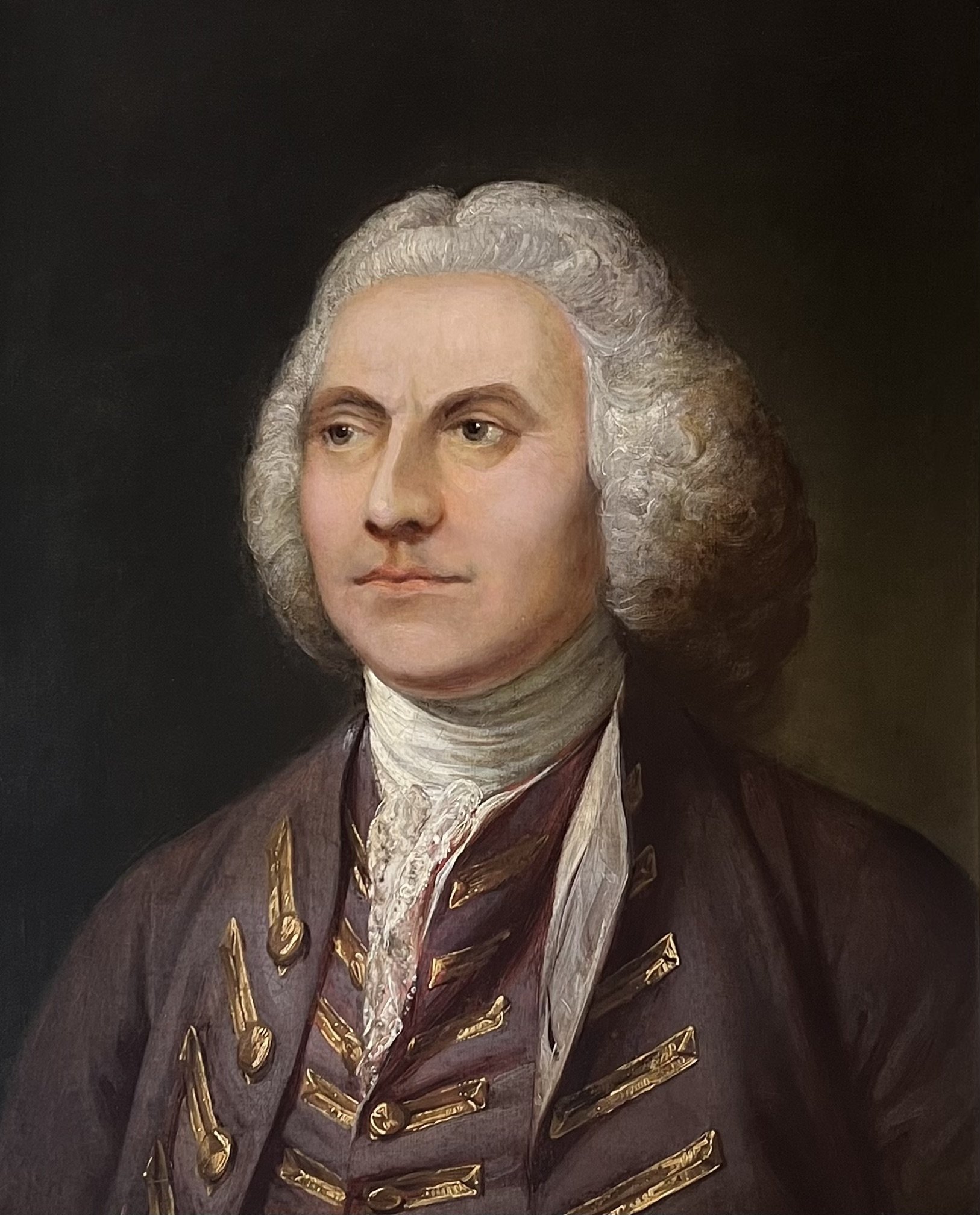
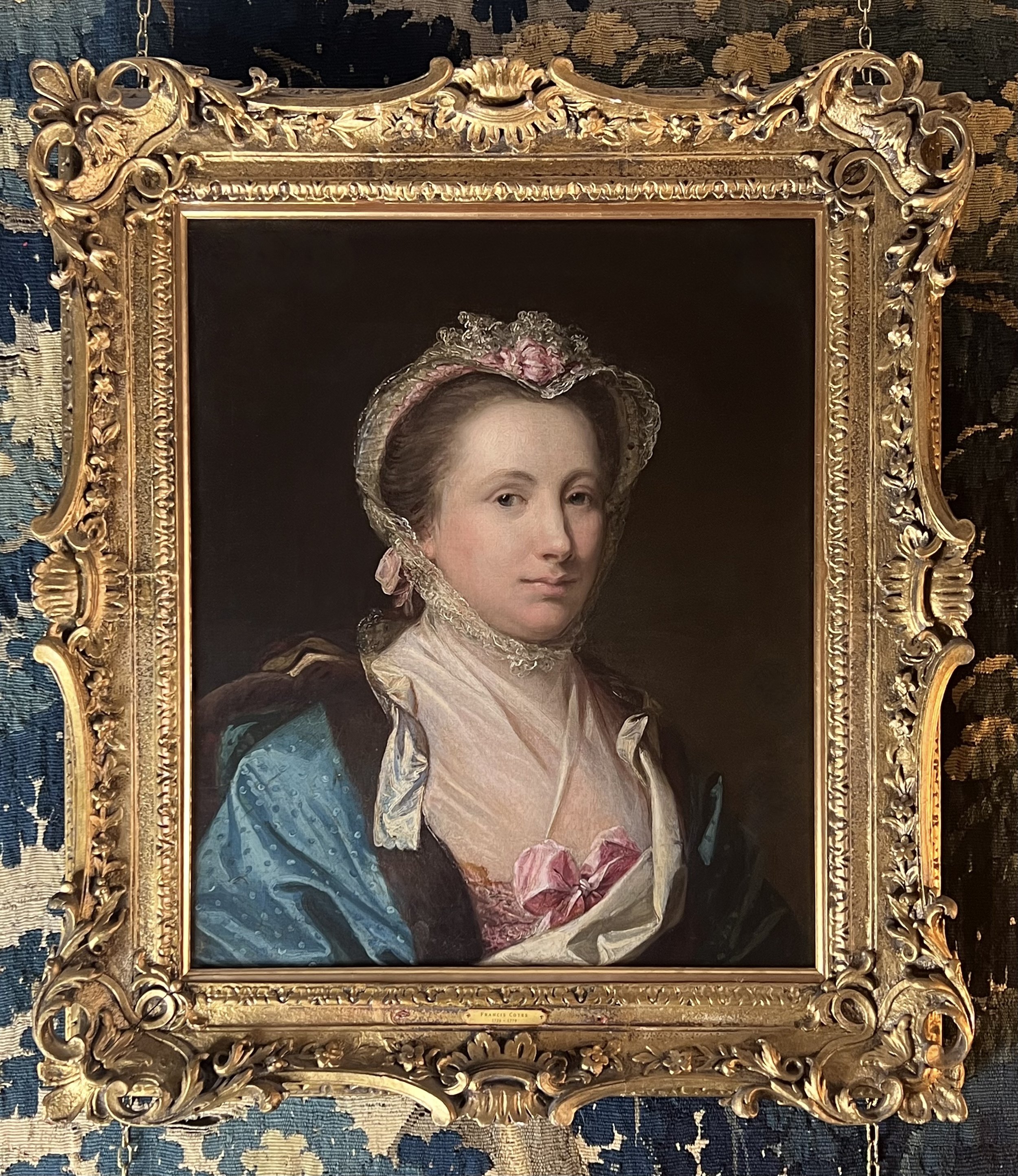
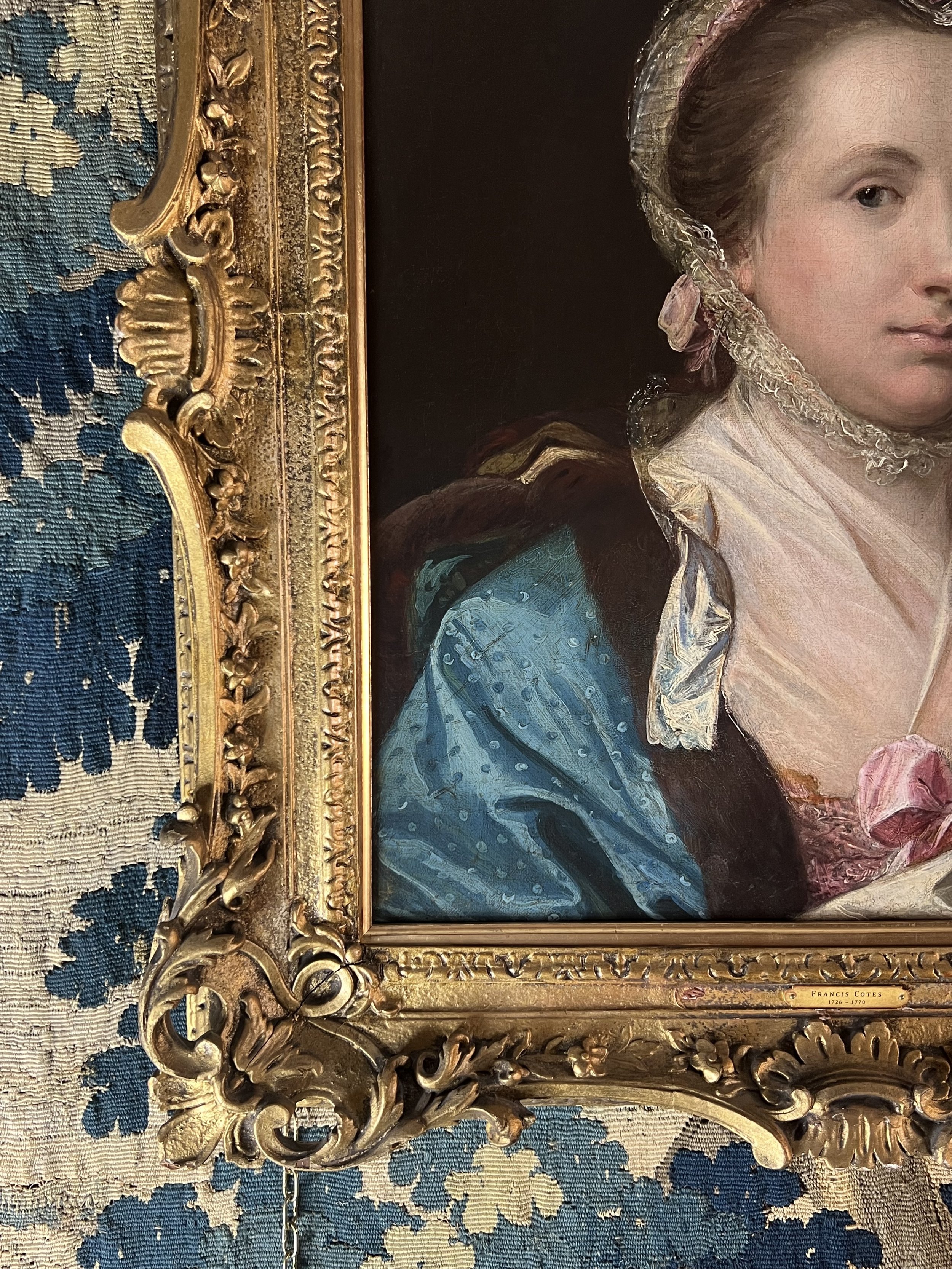
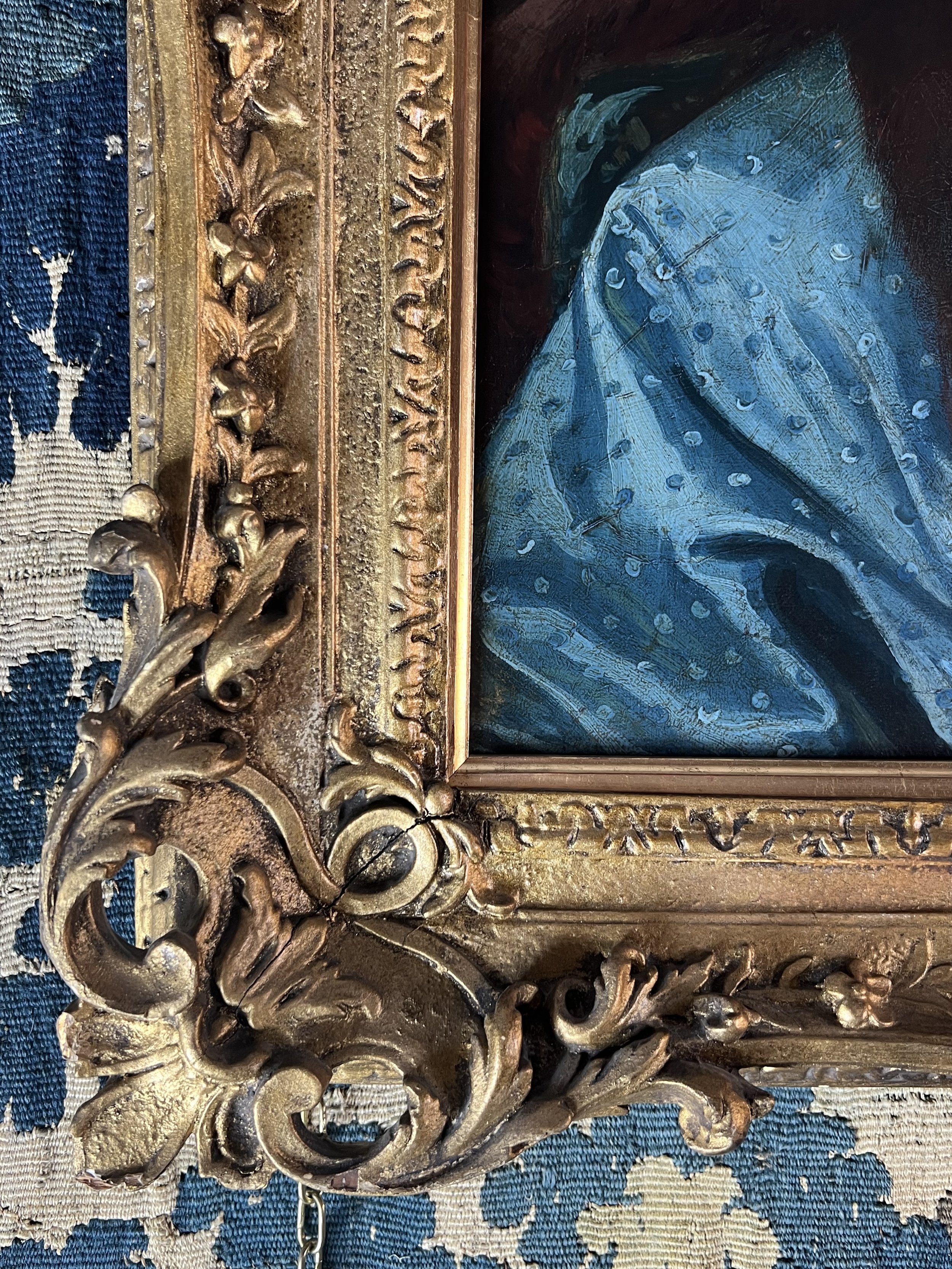
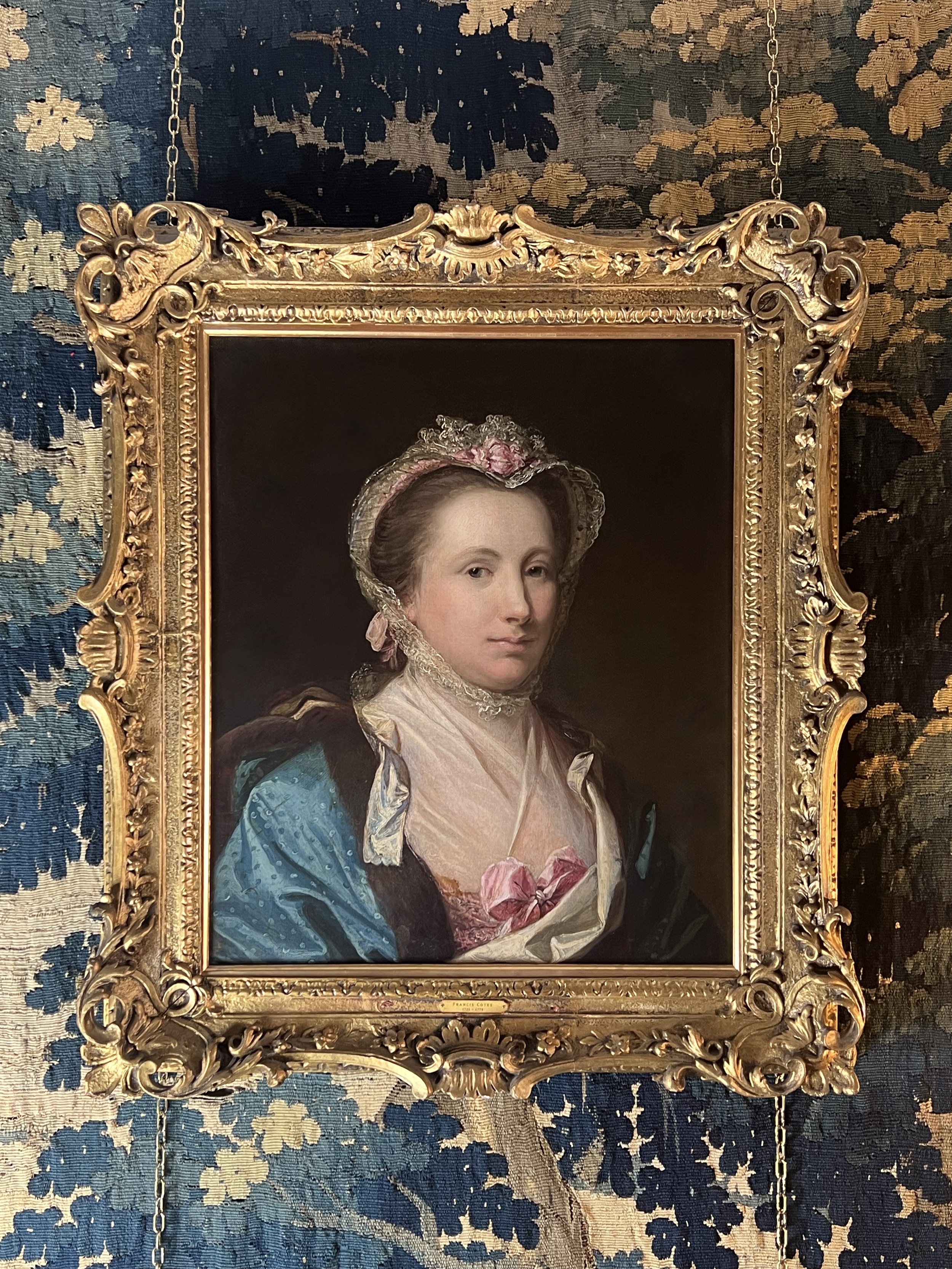
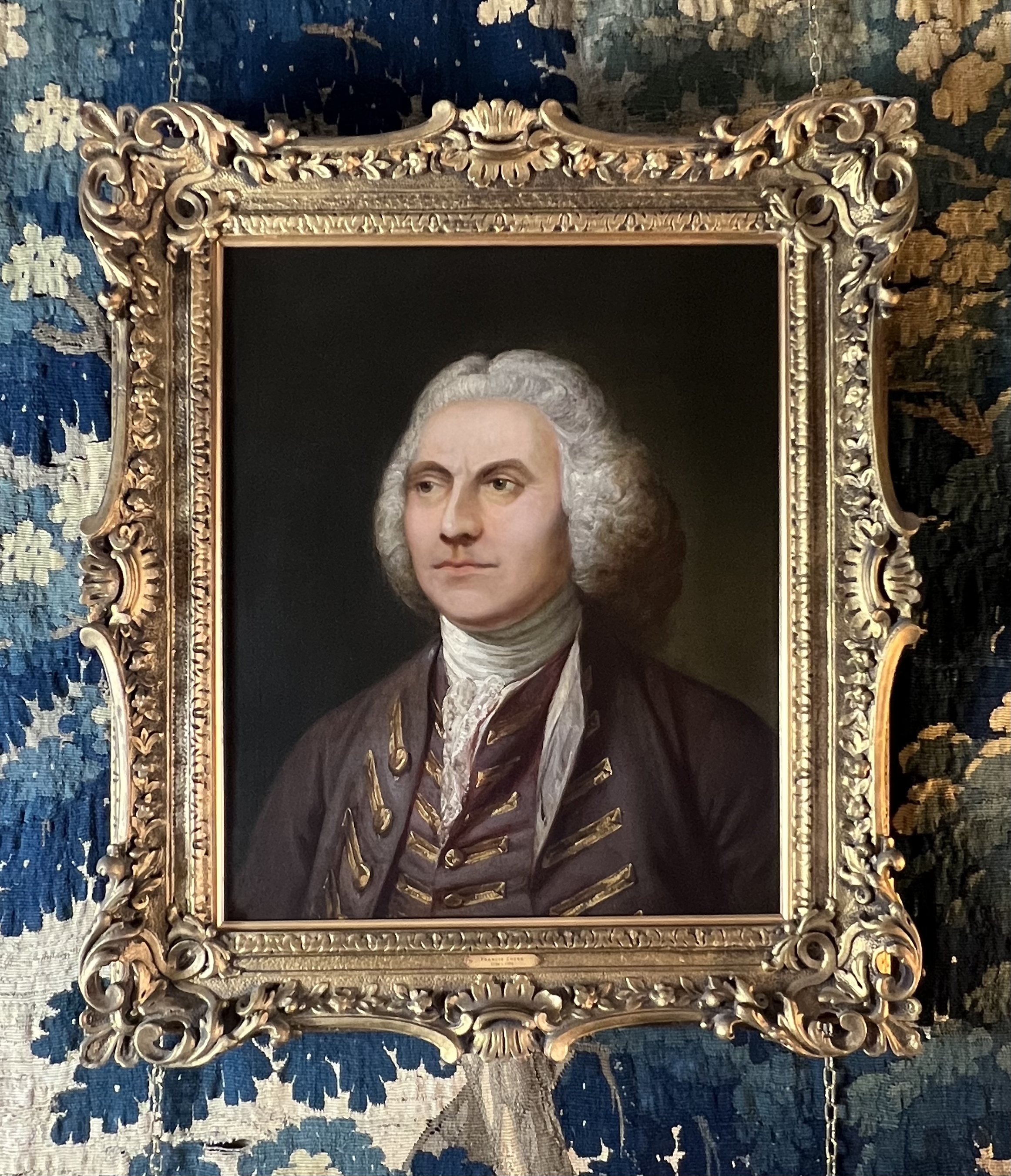
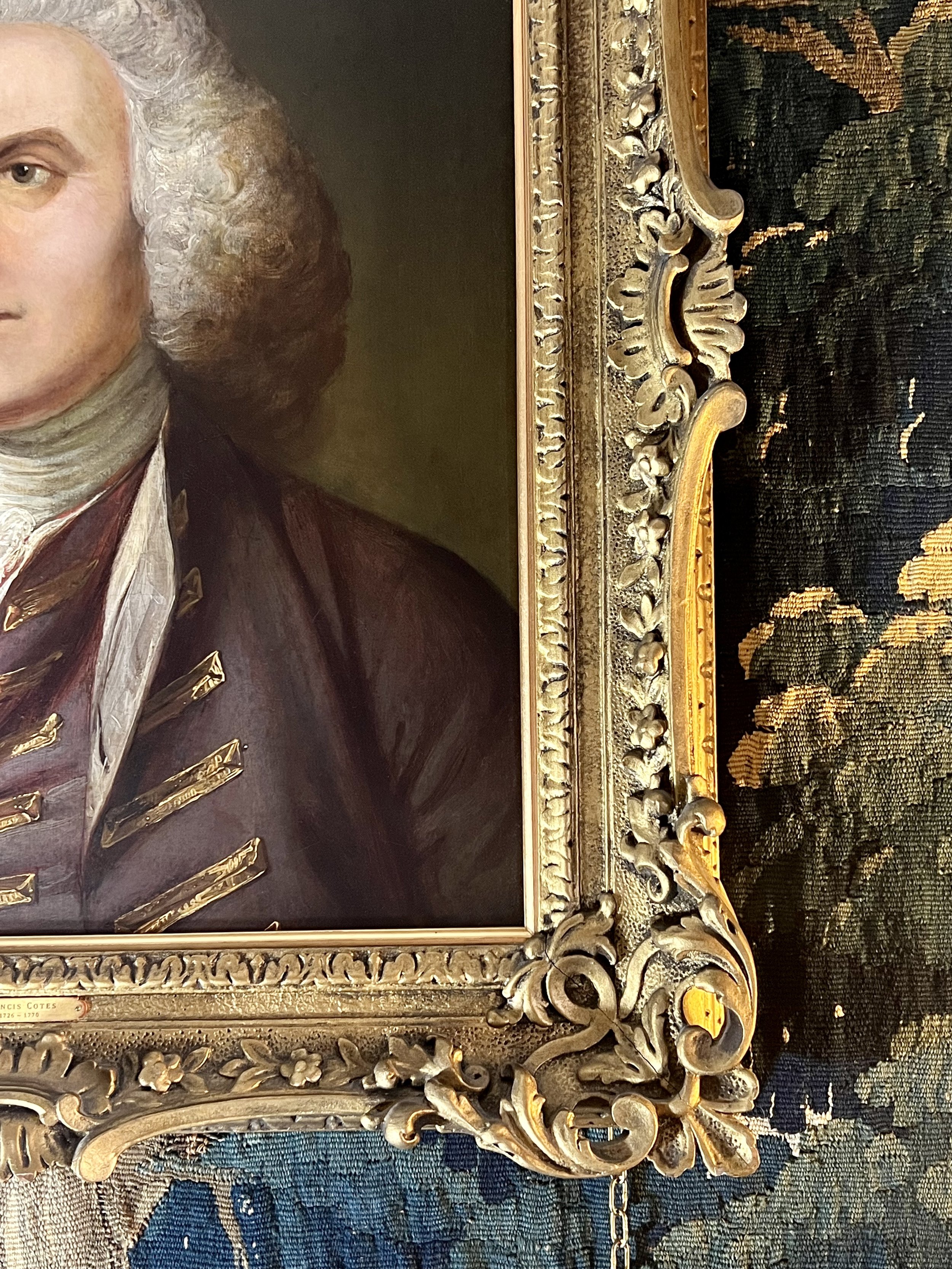
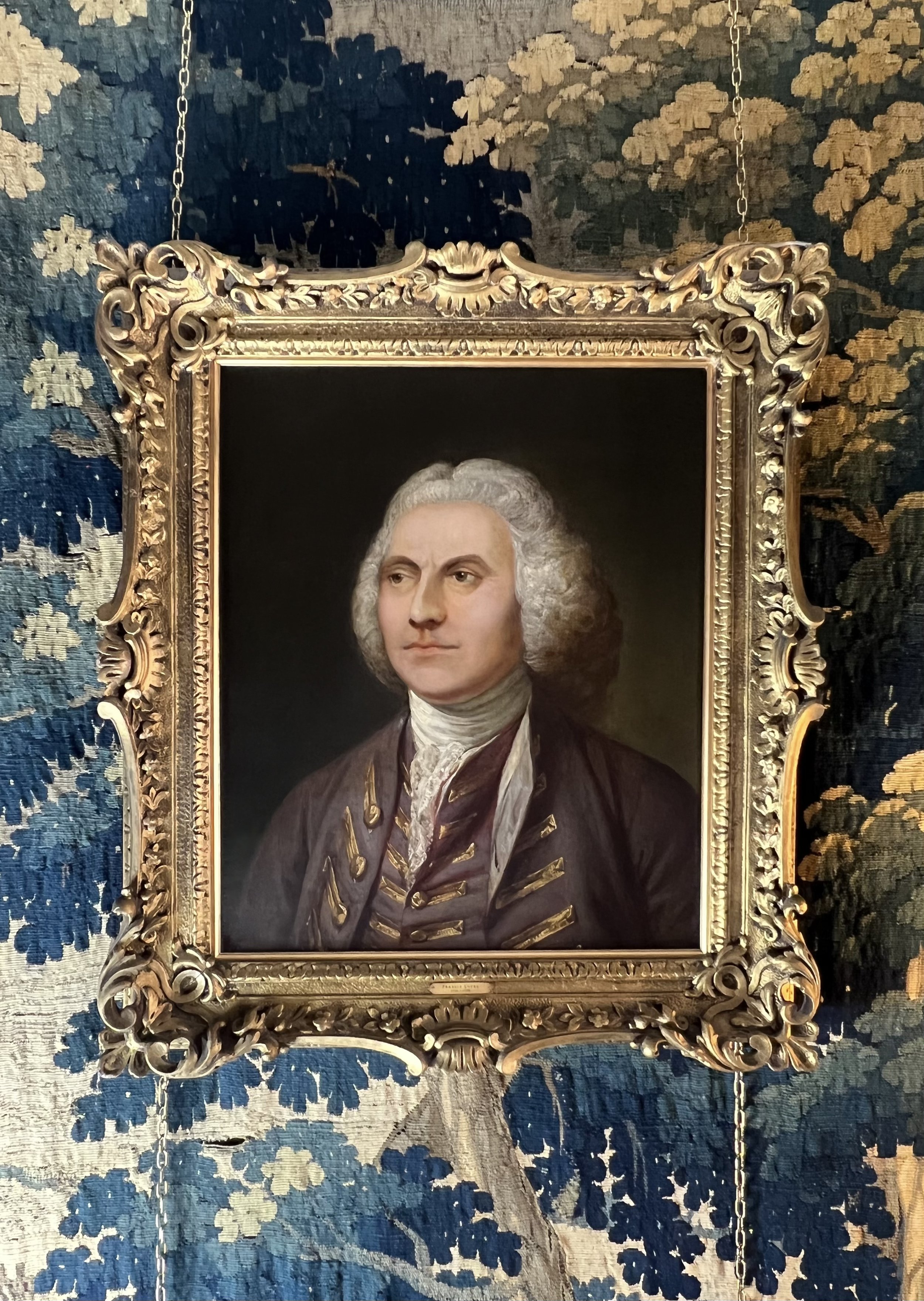
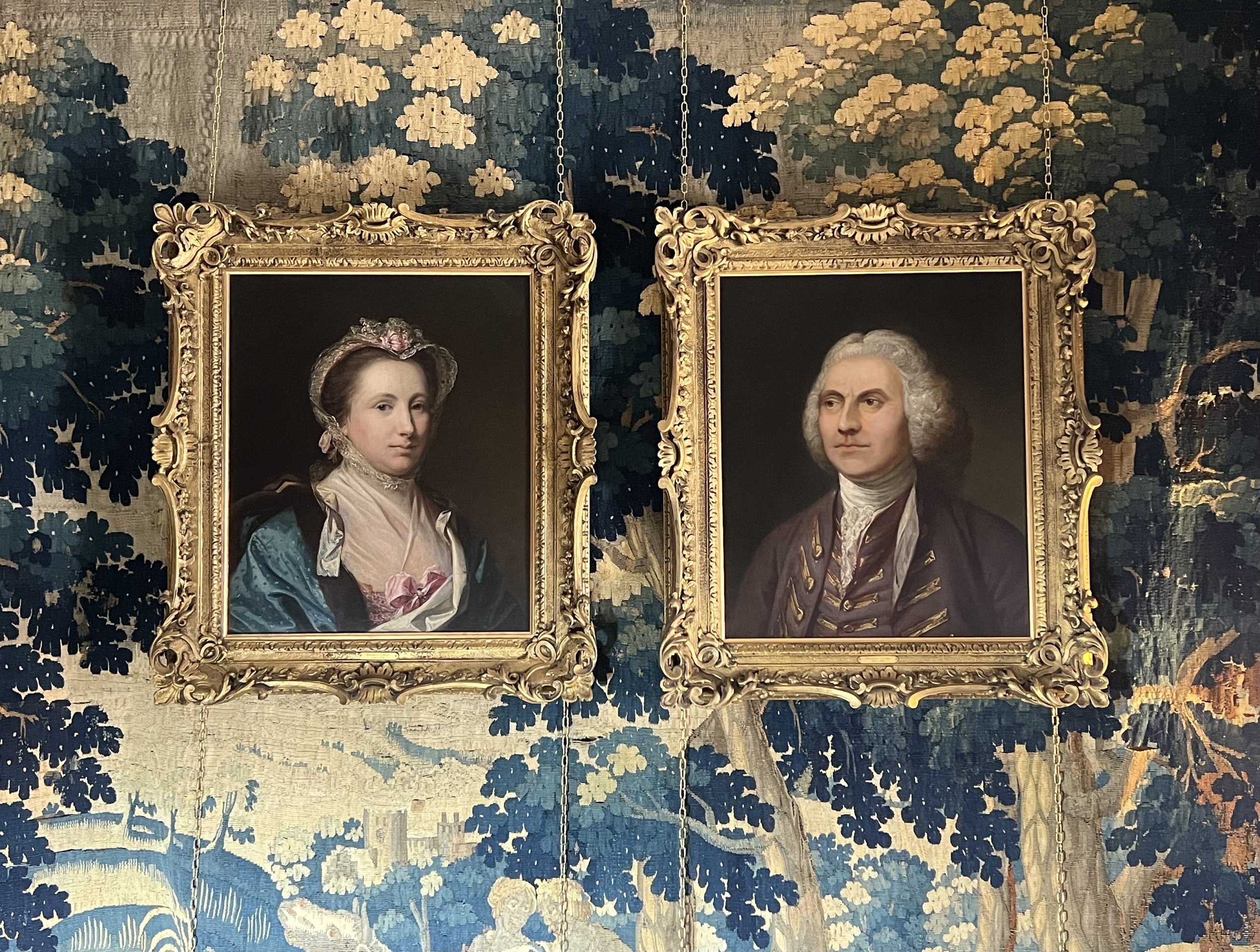
A PAIR OF 18TH CENTURY PORTRAITS OF A LADY AND A GENTLEMAN - BY FRANCIS COTES (1726-1770)
A fine and impressive pair of portraits showing a prosperous man and woman (presumably husband and wife) by the great pastelist and painter in oils, Francis Cotes. These portraits are early examples of Francis Cotes’s work in oils and they provide an enchanting snapshot of the middle classes of mid-Georgian England.
Francis Cotes (1726-1770) For much of his career up to the late 1750s, Cotes had been a specialist in pastels, perfecting his use of the medium to produce naturalistic portraits that conveyed a sense of the sitter’s individual character. Although Cotes’s first portrait in oils is dated to 1753, it was not until the end of the decade that he began to work more extensively in the medium. Deeply impressed by the example of Allan Ramsay, who established his career in London following his return from Italy in 1757, Cotes began to develop a manner of painting that introduced something of the softness of the pastellist’s art to the more formal medium of oils on canvas.
This pair of portraits dates to this earlier period and can be compared with Cotes’s portraits of Sarah Robinson (University of Southampton) and Mrs Hamilton of Raploch (Low Parks Museum) dated 1761 and 1762 respectively, when Cotes’s work still preserved the intimate mood of pastel portraiture before assuming a grander manner in the later 1760s.
Cotes achieved the status of being one of the most talked-about figures in the London art world. To cement his profession success, in 1763, he took a lease on a house at 32 Cavendish Square, a fashionable and recently-developed part of Marylebone. The house included a room that he used for the teaching of his students, a studio in which he could paint his sitters and a gallery in which he could show examples of his work to prospective clients.
As the 1760s wore on, Cotes came to be greatly influenced by Reynolds’s example, with his colouring becoming bolder and his sitters increasingly being shown in a large-scale, full-length format. Unlike this later period in his work (when he often preferred to show his sitters in generalised classical dress) the sitters here are shown dressed in the kind of clothes that they might have worn on special occasions in their everyday lives.
The gentleman is dressed in a fashionable three-piece suit with a stock and cravat tied around his neck. The shorter wig marks the transition in the middle years of the eighteenth-century away from the voluminous full-bottomed wig. The lady, whom we assume to be his wife from the conventions of paired portraiture, wears an elaborate silk cloak over a petticoat which is covered with a gauzy fabric. She wears a lace cap tied by a pink silk ribbon with another pink ribbon tied in a bow at her bosom.
There are many reasons why portraits like this might have been commissioned. Often, though, they were commissioned to commemorate special occasions, the most obvious being a marriage. It may be that this portrait was commissioned with a similar function in mind.
So great was Cotes’s talent that reviewers in the press began to compare his work favourably to that of Reynolds. Shortly before he died, William Hogarth went even further by declaring Cotes’s work to be greater than that of Reynolds.
These fine portraits are in an excellent state of conservation and are ready to hang and enjoy in their likely original hand carved and gilded 18th century frames, which are in themselves a work of art.
Higher resolution images on request. Worldwide shipping available.
Canvas : 20" x 24" / 51.5cm x 61cm.
Framed : 27” x 31” / 69cm x 79cm.
ON HOLD

